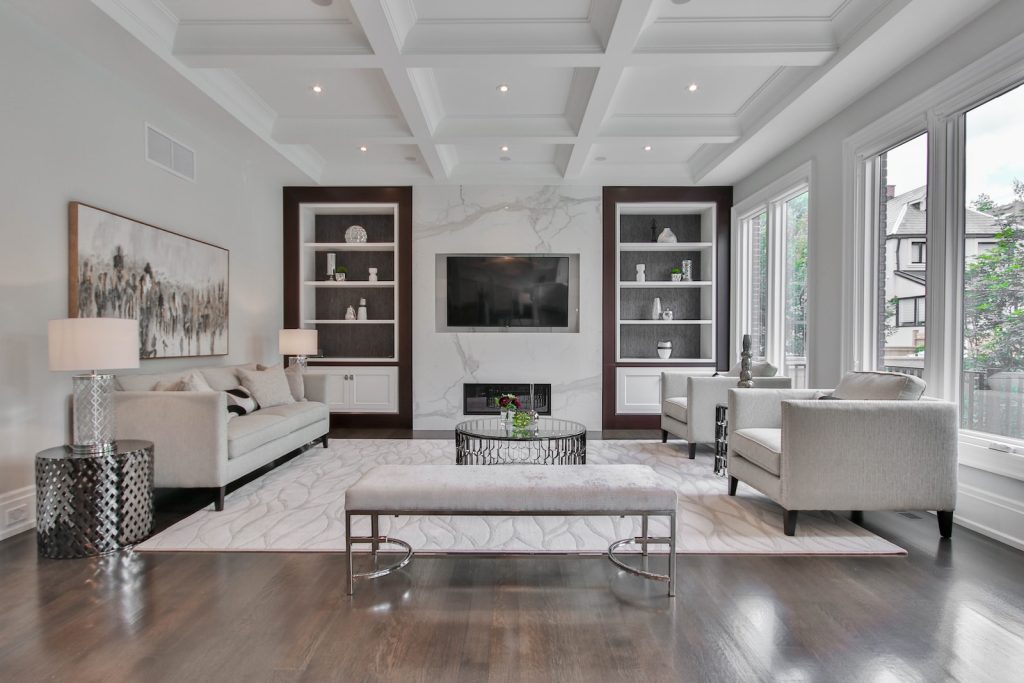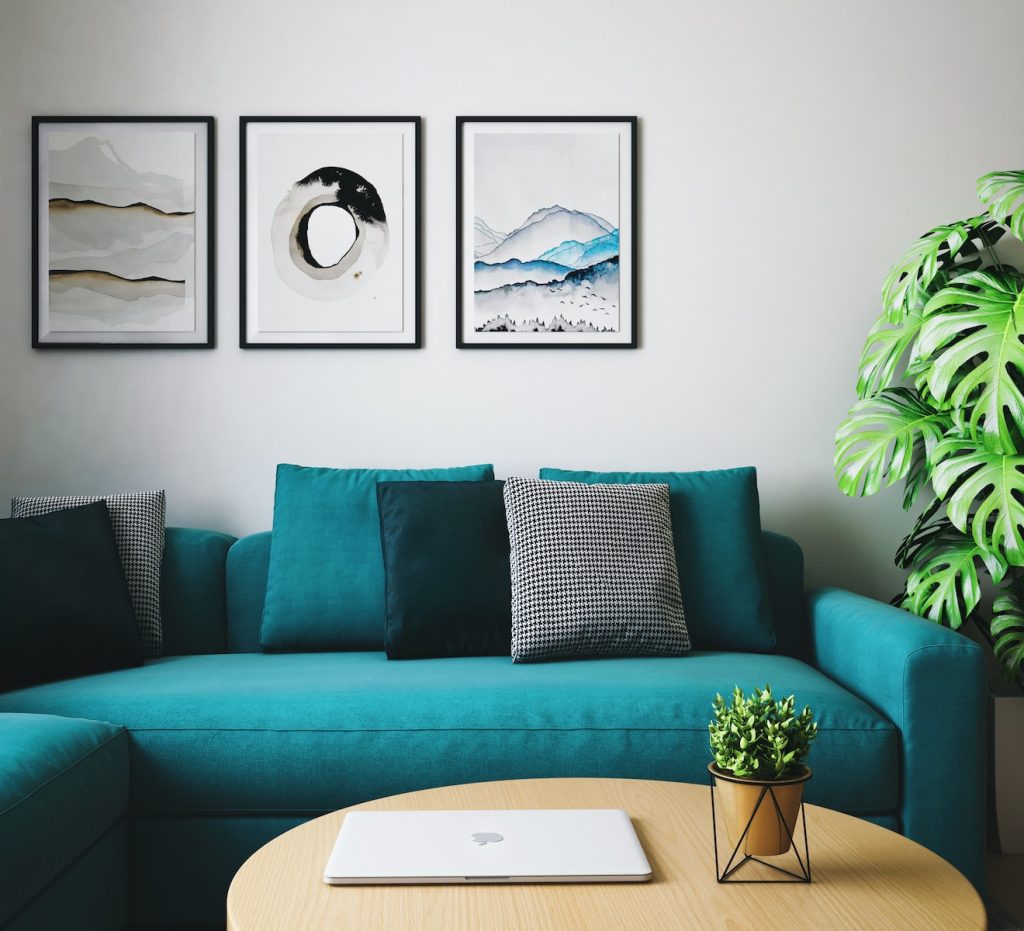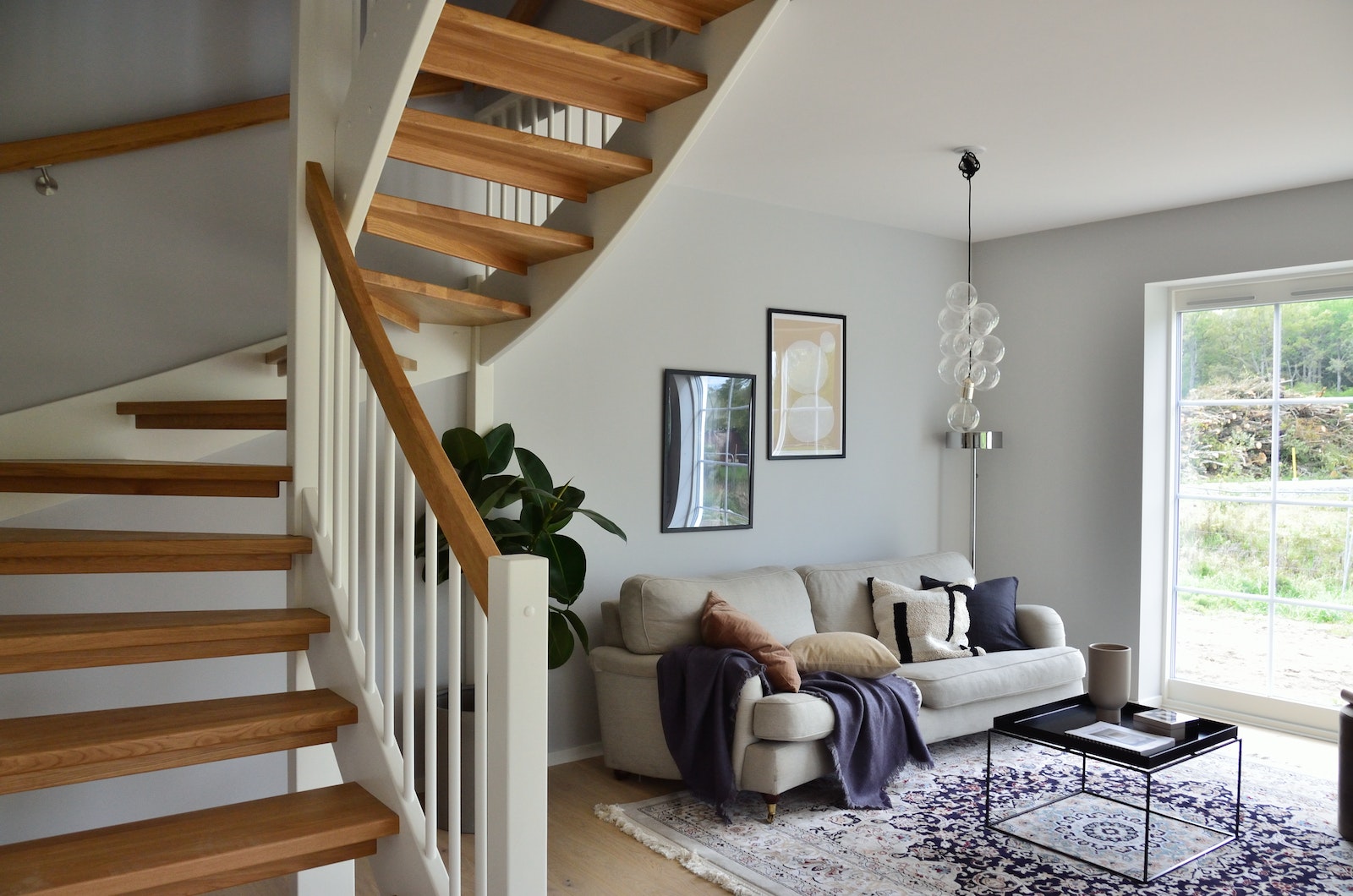A living room, often referred to as a lounge or sitting room, is a central space within a home that serves multiple purposes. This room is typically furnished with comfortable seating options such as sofas and armchairs and often features elements like coffee tables, bookshelves, entertainment systems, and decorative items. It’s usually the first room you encounter when entering a house, setting the tone for the rest of the abode.
The living room holds significant importance in a house. It’s not only a place for relaxation and entertainment but also a communal area where families come together to share stories, play games, entertain guests, or simply spend quality time together. The living room is often considered the heart of the home, providing a warm and welcoming space for everyone to gather and connect.
It’s interesting to note how the living room reflects the personality, lifestyle, and tastes of the people who live in the house. The choice of furniture, color schemes, decor, and even the layout can tell a lot about the inhabitants. For some, it may be a formal and elegant space reserved for special occasions and guests, while for others, it’s a casual and cozy spot for everyday family activities.
In essence, the living room plays a pivotal role in creating a congenial environment that fosters interaction, relaxation, and entertainment. It’s a multipurpose space that accommodates various activities and needs, making it an integral part of any home’s design and functionality. As we delve deeper into the history, purpose, key elements, styles, and designs of living rooms in the subsequent sections, we’ll gain a better understanding of why this room deserves our attention when creating a comfortable and inviting home.
History and Evolution of Living Rooms
The living room, as we know it today, has a rich and diverse history that reflects the evolution of society and cultural norms. Its origin traces back to ancient times and has since undergone numerous transformations.
The Origin of Living Rooms
The concept of a living room can be traced back to ancient Rome, where rooms known as “atrium” served a similar function. The atrium was a large open space located at the heart of the house. This room was used for daily social and family gatherings, signifying its importance in promoting communal living. However, it is essential to note that these spaces were vastly different from our modern-day living rooms, primarily due to the differences in lifestyle and societal structures of the time.
Evolution Throughout the Ages
As societies evolved, so did the design and function of the living room. During the Middle Ages, the ‘Great Hall’ in larger homes served multiple functions, including dining, socializing, and sometimes even sleeping. By the Victorian era, the living room began to resemble what we are familiar with today. Known as the ‘parlor,’ it was a place for formal social gatherings and entertaining guests. This period saw the advent of various architectural styles and advancements, leading to more elaborate designs and decorations in living rooms.
Influence of Cultural and Societal Changes
Cultural and societal changes have significantly influenced the function and design of living rooms. For instance, the Industrial Revolution brought about significant changes in interior design. With the mass production of furniture and home decor items, living rooms became highly ornate and decorative. In contrast, the post-World War II era saw a shift towards minimalism and functionality. This period emphasized comfort and relaxation, reflecting a change in societal values and lifestyle.
Moreover, the rise of technology has also played a crucial role in shaping the modern living room. The introduction of televisions in the mid-20th century redefined the living room’s function as a space for family entertainment. Today, with the advent of smart homes and digital technology, living rooms are becoming more multifunctional, serving as a space for relaxation, work, entertainment, and socializing.
In essence, the history and evolution of living rooms provide a fascinating insight into our changing lifestyles and societal norms. From the communal atriums of ancient Rome to the multifunctional spaces of today, living rooms have always served as a reflection of the times, adapting to fit the needs and preferences of each generation.

Understanding the Purpose of a Living Room
The living room, often regarded as the heart of a home, serves multiple purposes and functions that contribute to our daily lives. It’s not just an area within the confines of four walls and a ceiling; it’s a space where life unfolds. Let’s delve into its primary purposes and understand what typically transpires in this essential part of the house.
The Primary Purposes and Functions
Primarily, the living room is a communal space intended for relaxation and socialization. It’s where family members gather to spend quality time, engage in conversations, watch television together, or simply unwind after a long day. This space is also designed to entertain guests, making it the perfect venue for hosting social gatherings like parties, dinners, or casual get-togethers.
Moreover, the living room often acts as a display area, showcasing the homeowner’s tastes and personality. It’s adorned with family photos, art pieces, souvenirs, books, and other personal mementos, telling a story about the people who live there. In essence, the living room is a reflection of the inhabitants’ lifestyle, culture, and values.
Activities Commonly Performed in a Living Room
As the name suggests, the “living” room is where a considerable chunk of ‘living’ happens. An array of activities takes place here due to its versatile nature. For instance, many families congregate in the living room for movie nights, board game sessions, or to cheer on their favorite sports teams. Some may use the space for more quiet and solitary activities like reading, knitting, or meditating.
With the advent of remote work and learning, the living room has also evolved into a makeshift office or classroom for many. It’s not uncommon to see people attending virtual meetings, studying, or even exercising in their living rooms. Indeed, the activities that can be enjoyed in this space are as varied as the people who use it.
In sum, the living room is more than just a room; it’s a dynamic space that adapts to our changing needs and lifestyles. Whether it’s for relaxation, socialization, work, or play, the living room truly embodies its name, serving as a stage where much of our daily “living” takes place.
Key Elements of a Living Room
The living room, often seen as the heart of the home, is composed of several key elements that contribute to its overall function and aesthetics. These elements, ranging from furniture pieces to decor items, each play a unique role in creating an environment that is both comfortable and inviting.
Furniture Pieces in a Living Room
One of the most fundamental components of any living room is the furniture. The selection and placement of furniture can greatly influence the comfort, functionality, and visual appeal of the space. Some common furniture pieces found in living rooms include sofas, chairs, coffee tables, end tables, media consoles, and bookcases.
- Sofas and Chairs: They form the primary seating area and are essential for creating a relaxing atmosphere where people can sit, chat, or watch television. The style and material of these pieces can also set the tone for the rest of the room.
- Coffee Table: Positioned in the center of the seating area, the coffee table serves both a functional and aesthetic purpose. It offers a convenient spot for setting down drinks or books, while also providing a platform for displaying decorative items.
- End Tables: These small tables are typically placed at the ends of sofas or between chairs. They offer additional surface space for lamps, decor, or beverages.
- Media Consoles and Bookcases: Media consoles house entertainment equipment like televisions and stereos, while bookcases provide storage and display space for books, photos, art, and more. Both contribute to the room’s organization and style.
The Significance of Each Element
Every element in the living room, no matter how small, plays a significant role in shaping the room’s overall vibe and functionality. The furniture, for instance, not only provides comfort but also dictates the layout of the room and influences the flow of movement. The right arrangement of sofas and chairs can foster conversation and social interaction, while an appropriately placed coffee table or media console can enhance convenience and accessibility.
Other elements like lighting fixtures, rugs, curtains, and art pieces also have a substantial impact on the aesthetics of the living room. These elements add layers of visual interest, inject personality into the space, and help to create a desired mood or atmosphere. For example, a well-chosen rug can tie all the furniture together, creating a cohesive look, while art pieces can serve as focal points that draw the eye and spark conversation.
In essence, each element in the living room contributes to a complex interplay of function and style, working together to create a space that is not just beautiful, but also livable and welcoming.
Different Living Room Styles and Designs
Living rooms are like canvases waiting to be filled with personal style and taste. They offer a multitude of design possibilities, each reflecting the unique character of its inhabitants. The variety is so extensive that it spans across various eras, regions, and lifestyles. Here, we will explore some of the most popular living room styles and designs that have captured the hearts of homeowners worldwide.
Overview of Popular Living Room Styles and Designs
One of the most timeless living room styles is the traditional design. It is characterized by rich color palettes, classic furniture, and a plethora of textures and patterns. Often, you will find antique pieces and architectural details that echo the past, offering a sense of comfort and familiarity.
Modern living rooms, on the other hand, embrace simplicity and minimalism. They often feature neutral color schemes, clean lines in furniture design, and minimal clutter. This style prides itself on functionality without sacrificing aesthetics, making use of materials like glass, metal, and concrete for a sleek and sophisticated look.
For those who love nature and organic elements, the rustic design is an excellent choice. Rustic living rooms incorporate raw, natural elements like wood and stone, and often feature a warm and earthy color palette. The result is a cozy, inviting space that feels like a cabin in the woods.
The Influence of Personal Taste, Lifestyle, and Culture
More than just following trends, the design of a living room often tells a story about its occupants. Personal tastes significantly shape the aesthetic of the space, from color choices to furniture selection. For instance, a book lover might opt for a living room filled with bookshelves and cozy reading nooks, while an art enthusiast might choose bold colors and eclectic furniture to showcase their art collection.
Lifestyle also plays a crucial role in determining the style of a living room. Families with young children might prioritize durability and storage, opting for hard-wearing fabrics and plenty of shelves or baskets. Conversely, those who love to entertain may prioritize open spaces for movement, comfortable seating for guests, and a stylish bar area.
Cultural influences can also significantly impact living room design. For example, Japanese-inspired living rooms often incorporate elements of Zen philosophy, like simplicity and harmony. They might feature sliding doors, natural materials, and minimal furniture to create a peaceful, calming environment.
Ultimately, the style and design of a living room are deeply personal, reflecting individual tastes, lifestyles, and cultural backgrounds. It’s a space where personality shines through, making it the true heart of any home.

Tips for Designing Your Living Room
At the heart of a successful living room design is a thoughtful plan that takes into account both function and aesthetics. Whether you’re starting from scratch or looking to revamp an existing space, here are some key considerations to help you create a room that’s not only visually appealing but also comfortable and functional.
Start With a Floor Plan
Before diving into the finer details of your living room design, it’s important to start with a solid plan. This means understanding the dimensions of your space, including any architectural features such as windows, doors, or fireplaces that could impact furniture placement. Sketch out a rough floor plan and consider how traffic will flow through the room. Remember, a well-designed living room should be easy to navigate, with clear pathways to all seating areas.[1]
Balance Comfort and Function
Once you have a floor plan, the next step is to think about the function of your living room. What activities will take place here? Will it be a space for relaxing, entertaining, working, or perhaps all three? Understanding your living room’s purpose will guide your choice of furniture and accessories. For instance, if you envision hosting movie nights, investing in comfortable seating and a quality entertainment center would be a priority. Conversely, if you anticipate using the room for reading or working, good lighting and a quiet corner with a desk might be more important.[2]
Consider the Aesthetics
The aesthetics of your living room are equally important. This encompasses everything from color schemes and furniture styles to artwork and decorative elements. Aim for a cohesive look that reflects your personal style and complements the overall design of your home. Don’t be afraid to mix and match different styles, textures, and colors for a unique look. But remember, balance is key. Avoid overcrowding the room with too many elements or going too minimalistic that it loses its warmth and inviting feel.[3]
Don’t Forget About Lighting
Lighting can make or break a living room design. It’s crucial to have a combination of light sources at different levels to create a warm, welcoming atmosphere. Consider a mix of ambient lighting for general illumination, task lighting for specific activities like reading or working, and accent lighting to highlight artwork or architectural features. If possible, take advantage of natural light by arranging your seating area near windows.[4]
In essence, designing a living room is a balance between form and function. With careful planning and thoughtful consideration of both practical and aesthetic elements, you can create a space that’s truly yours – a place where you and your loved ones can relax, entertain, work, and most importantly, feel at home.
Conclusion
In the preceding sections, we have delved deep into the concept, history, purpose, elements, styles, and designs of living rooms. We’ve learned that the living room is not just an ordinary space in a house; it’s a hub for relaxation, bonding, and entertainment. It’s a place where families gather to spend quality time and guests are received, serving as a reflection of our tastes and lifestyles.
The evolution of the living room has been greatly influenced by cultural and societal changes. From the formal parlors of the Victorian era to the multifunctional spaces of modern times, living rooms have continually adapted to meet the changing needs of households. They have transitioned from being a showpiece for visitors to being a cozy sanctuary for families.
Designing a living room is a task that requires careful consideration of various factors: the furniture, the decor, and the overall aesthetics. Each element placed in this room has a role to play in enhancing its functionality and appeal. Over time, a myriad of living room styles and designs have emerged, each unique and reflecting different personal tastes, lifestyles, and cultural influences.
Reflect on Your Living Room
Now, it’s your turn. Take a moment to reflect on your living room. Does it serve its primary purposes effectively? Is it a comfortable space for relaxation and entertainment? Does it reflect your personal style and preferences? These are all crucial questions that you should consider.
If you find that there’s room for improvement, don’t be afraid to make changes. Remember, your living room should be a space that caters to your needs and preferences. Whether it’s introducing more comfortable seating options, adding vibrant decor, or restructuring the layout, every change can significantly enhance your living room’s functionality and aesthetic appeal.
Embrace the Opportunity for Improvement
As you contemplate these questions, remember that the opportunity to improve is always exciting. It’s an opportunity to inject new life into your living room, making it more inviting and enjoyable for both you and your guests. So, embrace this opportunity, and don’t hesitate to take the necessary steps towards creating a living room that you love and are proud of.
